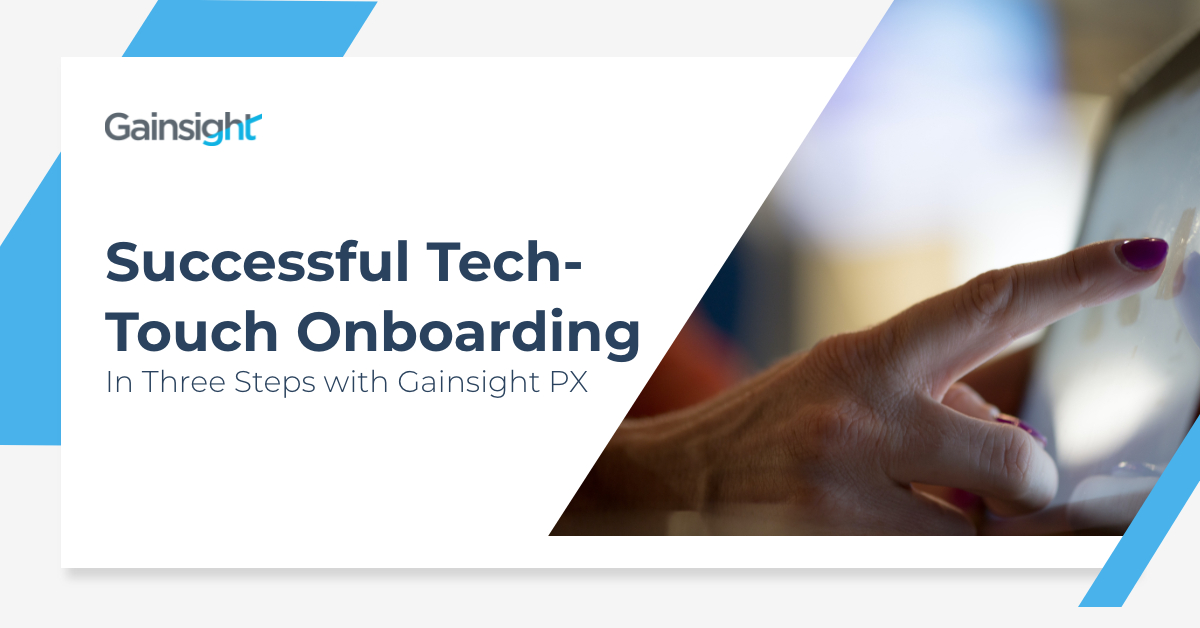The onboarding process is a critical predictor of a customer’s success and an essential element for avoiding churn. So imagine, if you will, a product-onboarding process for every new customer that’s intuitive, efficient, and easy to scale. Such tech-touch onboarding would boost brand affinity for end-users who embrace (and would likely evangelize) a product with robust features and functionality that’s also easy to navigate and has built-in responsiveness and support.
In this scenario, it’s not only customers who would enjoy increased productivity and cut costs due to a highly efficient onboarding process. CSMs at SaaS companies could leverage tech-touch to quickly and effectively manage smaller accounts or their long-tail customers. As needed, CSMs could also augment the tech-touch approach with high-touch engagement, further driving product adoption, and faster Time-to-Value (TTV) by providing human interaction and support at critical points along the onboarding journey.
In short, it would be an onboarding game-changer.
At Gainsight, we’ve turned this dream into rock-solid reality. With Gainsight PX, customers experience straightforward, seamless onboarding featuring tech-touch and in-product guidance. CSMs can deliver onboarding at scale and, when appropriate, can provide a white-glove experience with low-touch.
At a recent Gainsight PX customer webinar, two of our experts explained three key tech-touch strategies for customer onboarding, which we’ll cover below. You can also listen to the recording here or download the presentation here.
We’ve identified three critical steps for optimizing tech-touch customer onboarding.
1. Identify key onboarding flows and map to defined user personas.
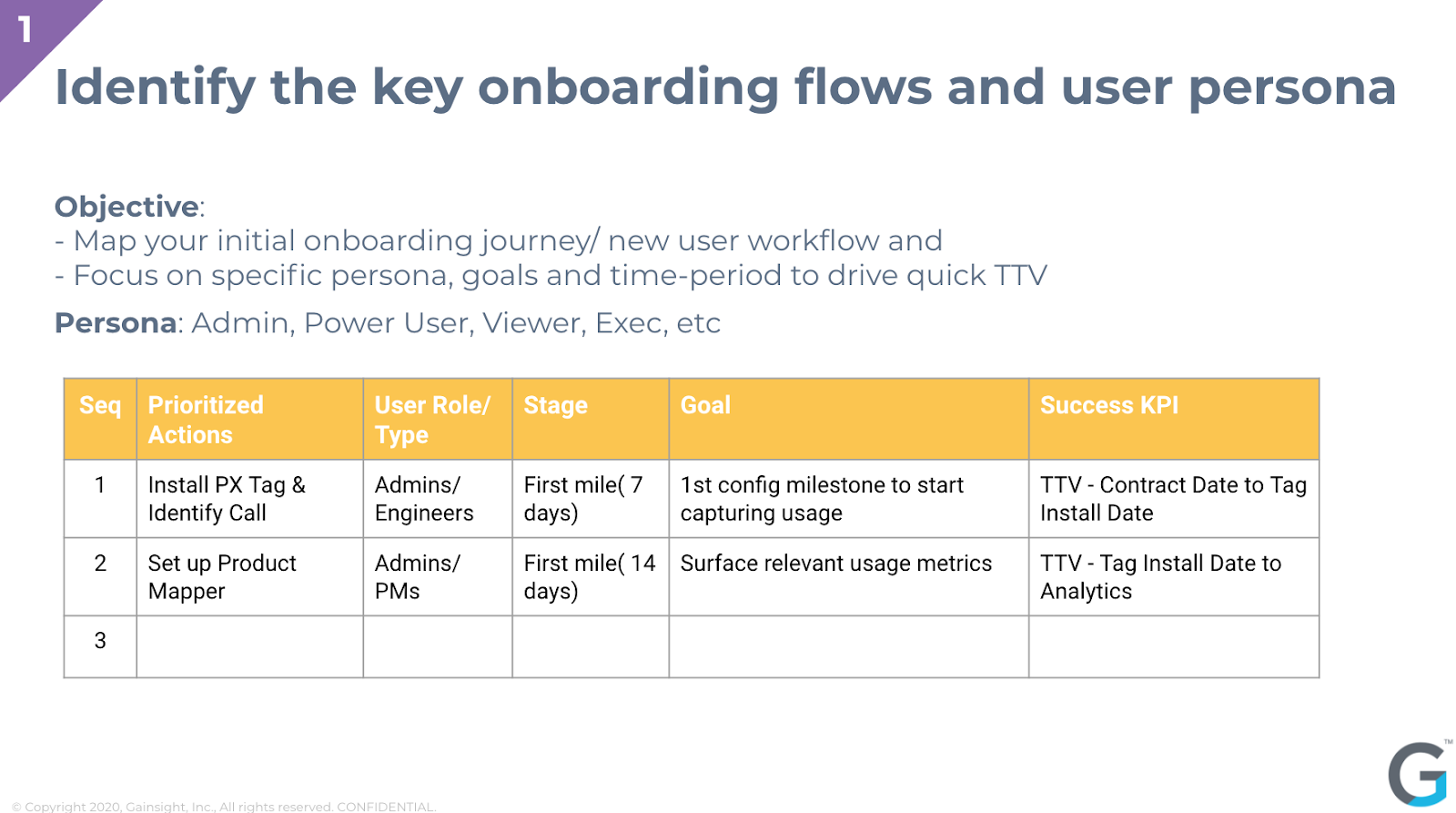
Onboarding workflow
As the chart above shows, having an administrator or engineer install PX tags and identify calls is the prerequisite to helping users quickly unlock the product’s value. Throughout this early stage, you can combine qualitative and quantitative data to identify new user workflows and drive alignment around the sequencing.
- Collect quantitative data: Interview internal teams and customers to identify the most valuable new-user workflows during onboarding and prioritize it in order of sequence. For example, partner with implementation teams to compare successful customers’ adoption patterns with those of new customers. Gainsight PX tools: Adoption Report, Path Analyzer, User Retention, and Survey/Feedback.
- Collect qualitative data: Leverage interviews with successful customers to identify top features, flows, and usage patterns; with customer success (CS) and professional services (PS) stakeholders to understand the quickest TTV and what’s most valuable in risk/renewal discussions; and with support, teams to determine which areas garner the most tickets and escalations.
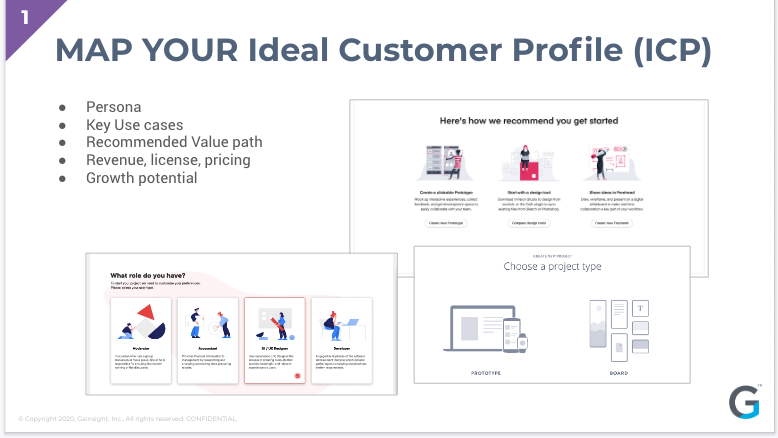
User persona
Creating relevant, curated content for an onboarding process requires accurately identifying and deeply understanding your users. If you don’t already have robust persona data, you can use the Ideal Customer Profile (ICP) approach via an in-app service to create and map key personas:
- Identify use cases using Prototype to mock-up interactive experiences, collect feedback, and get developmental specs
- Identify User Role (for example, moderator, accountant, developer)
- Segment by ARR/ Plan Type (revenue, licensing, pricing)
- Apply the Lifecycle stage
In addition to these steps, consider any other relevant account attributes to develop a more targeted onboarding program.
2. Define a multi-channel tech-touch program (in-product + other channels) and map to a timeline
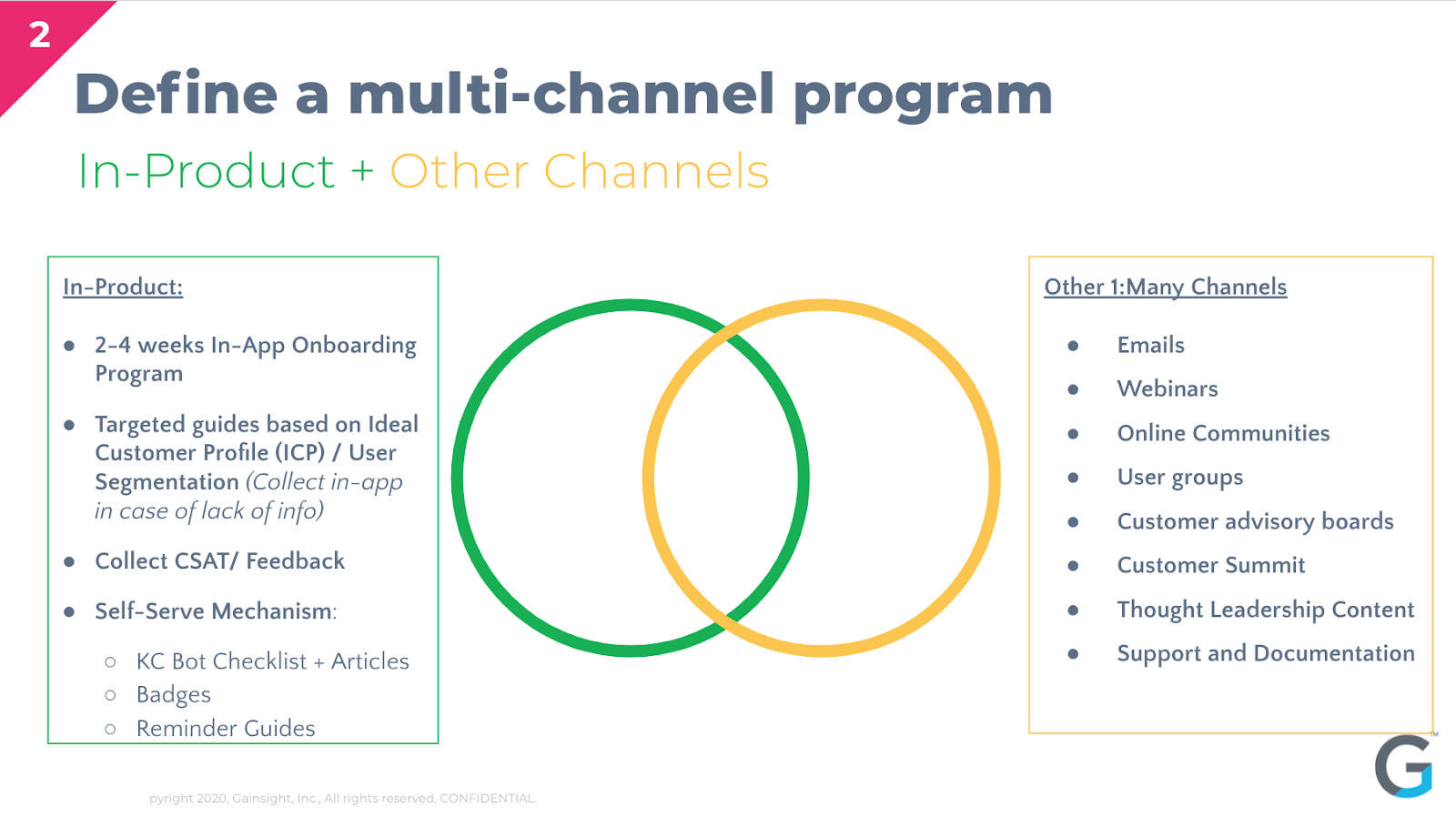
When driving tech-touch programs, taking a comprehensive, multi-channel approach (both in-product and beyond) to drive onboarding adoption is the most effective form of messaging.
Define the channels
In-product guidelines:
- Dedicate 2-4 weeks developing a persona-based onboarding program with in-product experience combined with other channels
- Create targeted, personalized guides based on ICP
- Collect in-app feedback following CSAT engagement to identify areas of improvement and capture customer sentiment in response to key questions like, “How can we do better?” (Note: Our research shows users are more inclined to answer in-app questions and surveys than respond to emails.)
- Self-serve features like Knowledge Center (KC) Bot Checklist, Badges, and Reminder Guides are important tools for consistent messaging and at-your-fingertips service and support.
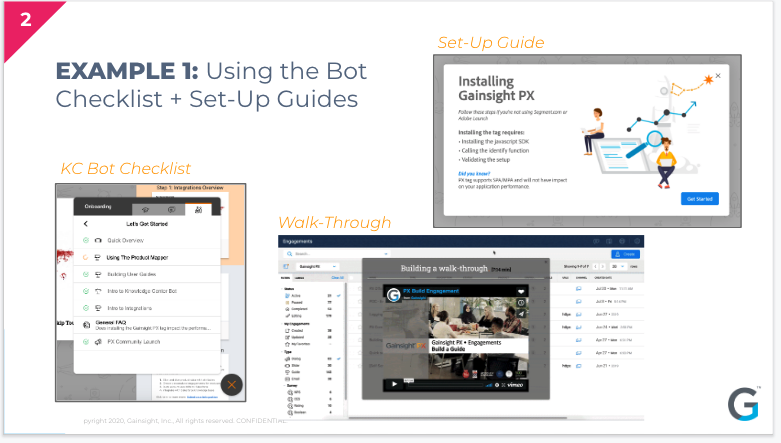
An on-demand in-product assistant like the PX Knowledge Center Bot (above) enables and empowers users to self-serve at their own pace via in-product guides, onboarding modules, walk-through articles, and videos, and more.
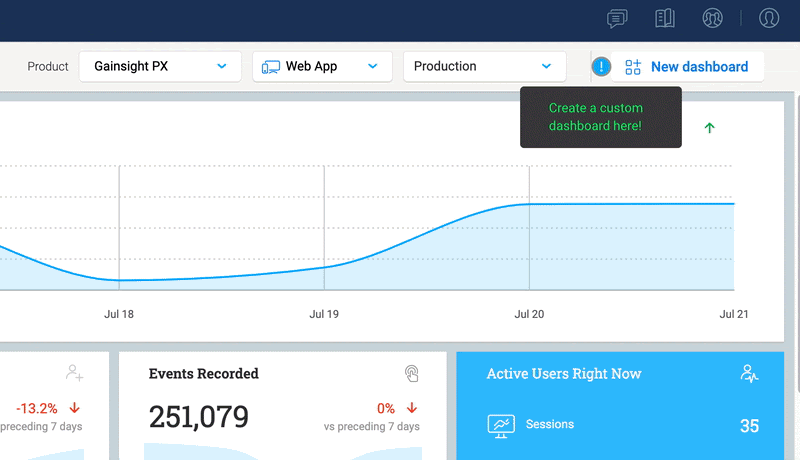
The image above shows an example of a new badge featured on a custom dashboard.
Other 1:many channels
Additional channels can be created and optimized to share knowledge and information, build community, and establish clear communication. Channels include emails, webinars, user groups, and support and documentation.
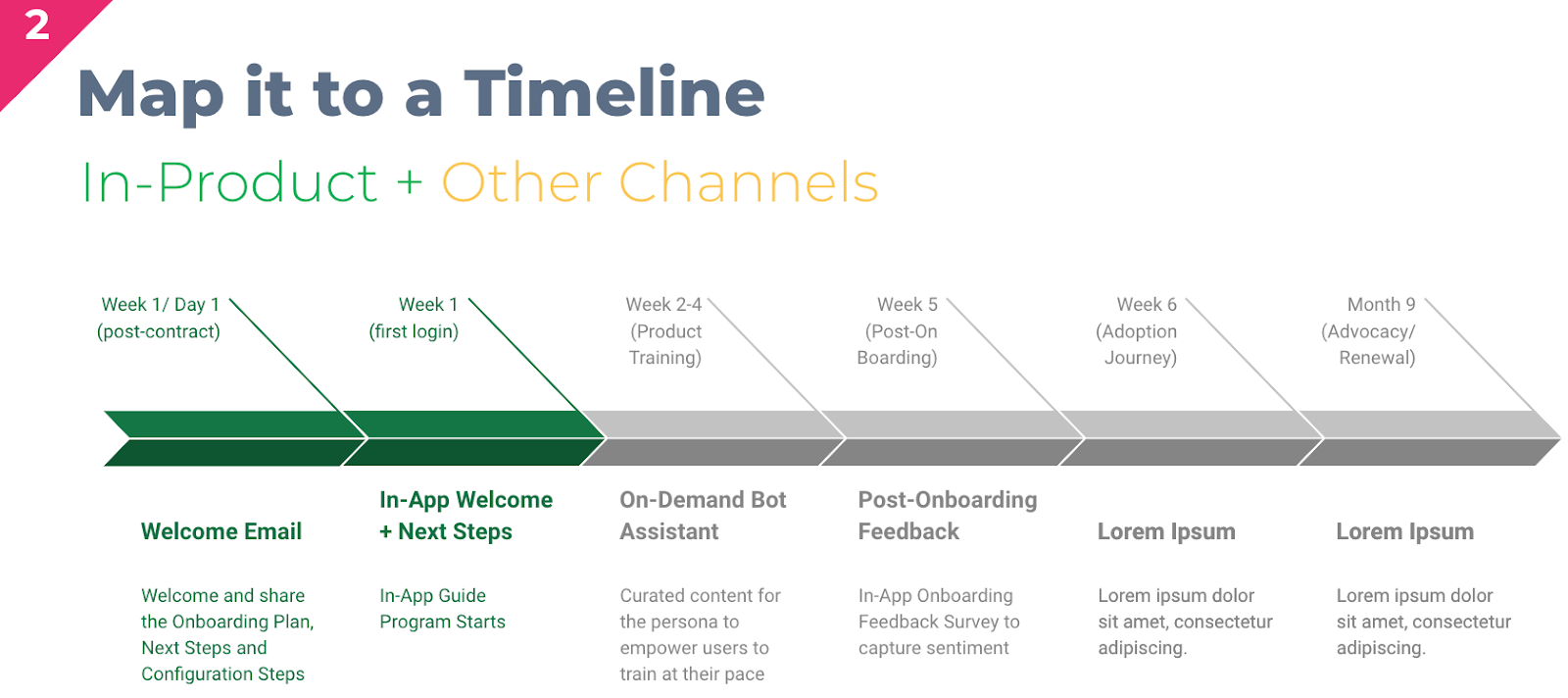
The next step? Map the ideal customer journey on a timeline.
3. Track the success metrics and re-iterate
Identifying and tracking select success metrics are an essential aspect of running a successful program. KPIs help you measure the progress of your onboarding process, and they’re also leading indicators of the effectiveness of your onboarding strategy, which you should iterate as needed. Useful measures of success may include:
- Time-to-Value (number of days from sign-up to first value, onboarding goals achieved, other success indicators based on your specific product)
- Onboarding team’s efforts (time/effort spent by CSM/PS team, number of support tickets, customer effort score)
- Usage/adoption metrics (% of login activity and user retention, core features adoption, usage trends)
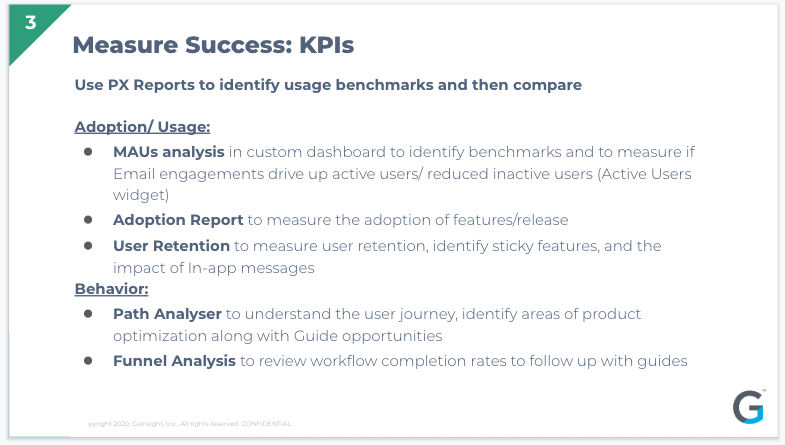
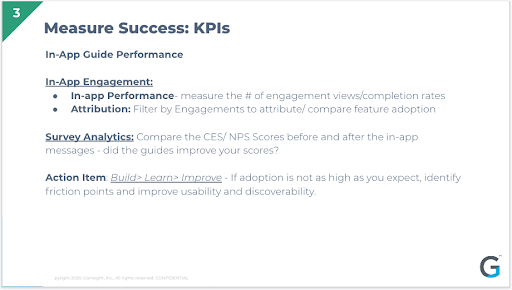
The two slides above capture some other leading indicators of success that are measurable through Gainsight PX.
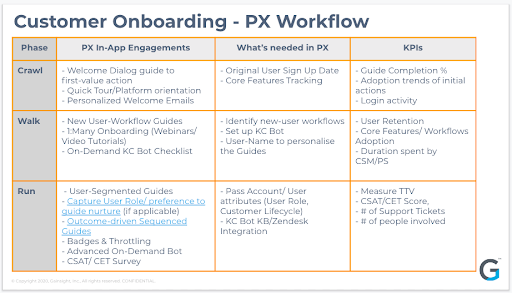
It’s important to remember that a successful tech-touch onboarding strategy isn’t developed overnight or in one fell swoop. That’s why Gainsight experts recommend taking a “crawl-walk-run” approach to implementation (see slide above) with clear benchmarks and milestones to gauge readiness and success.
Careful goal-setting and performance tracking help ensure you’re moving in the right direction when it comes to successful onboarding. Whether your program is a pure tech-touch- or a hybrid (tech-, high-, and low-touch) approach, if you discover that some part of the process isn’t working, stop to assess. It’s imperative that you and your team proactively re-iterate so you can achieve the true end-goal for all your customers: setting them up for success, driving them to quick TTV—and, ultimately, to a frictionless renewal.
Looking for other product-led success strategies and tips? Download our e-book, Product Led Success: The Professional’s Handbook for a look at how businesses are thinking about how to scale while improving customer experience to match rapid growth.
